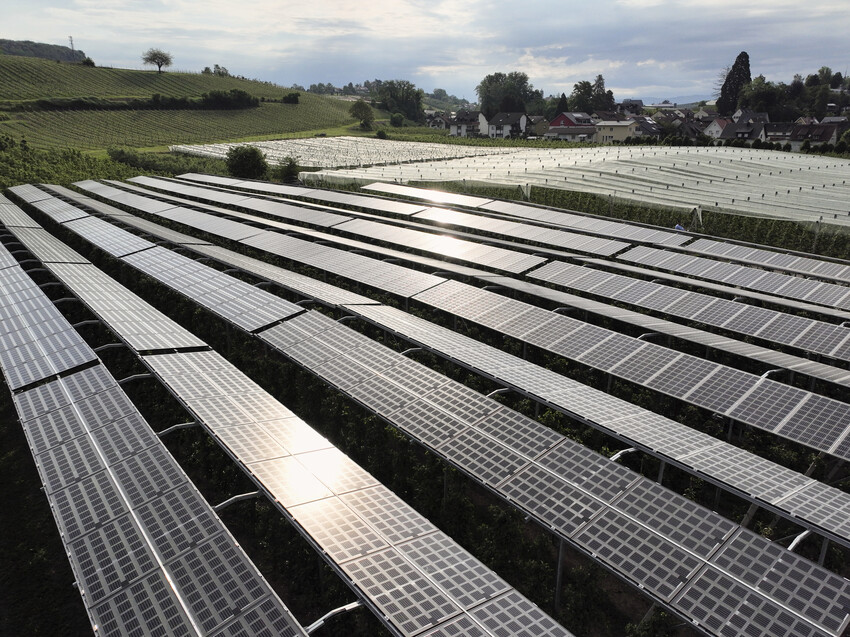Press Release #14
Next Decade Decisive for PV Growth on the Path to 2050
Global experts on solar power strongly urge a commitment to the continued growth of photovoltaic (PV) manufacturing and deployment to power the planet, arguing that lowballing projections for PV growth while waiting for a consensus on other energy pathways or the emergence of technological last-minute miracles “is no longer an option.” In a joint paper published on April 7th in the latest issue of Science, the PV researchers determined that a sustained global growth in photovoltaics of 25 percent per year over the next decade is prerequisite for achieving a climate-neutral global energy system by 2050. The full paper can be accessed at https://www.science.org/stoken/author-tokens/ST-1121/full.

The consensus reached by participants in the 3rd Terawatt Workshop, held in Freiburg, Germany last year, follows increasingly large projections from multiple groups around the world on the need for large scale PV to drive electrification and greenhouse gas reduction. The workshop, led by representatives from the Fraunhofer Institute for Solar Energy Systems ISE, the National Renewable Energy Laboratory (NREL) and the National Institute of Advanced Industrial Science and Technology (AIST) gathered PV experts that are affiliated with 41 institutions in 15 different countries. Assuming a future population of 10 billion, further decreases in PV costs, and increased energy consumption in the Global South, the experts suggest that about 75 terawatts or more of globally deployed PV will be needed by 2050 to meet decarbonization goals.
“Identifying a realistic target range for the needed PV deployment that is aligned with an achievable path to climate goals and economic development is critical for setting both the manufacturing and policy goals,“ said Prof. Dr. Andreas Bett, director of Fraunhofer ISE. “We have made great progress, but the targets will require continued work and acceleration,” commented Nancy Haegel, director of the National Center for Photovoltaics at NREL. Dr. Keiichiro Sakurai, senior researcher at AIST, adds: “Technological developments have and will play a big role in increasing efficiencies and decreasing module costs for the deployment.”
Capacity growth rates and costs
The coming years will be critical for reaching an installation target of this order of magnitude in a realistic way. According to the authors, the PV industry must continue to grow over the next years at rates of about 25 percent. This growth rate, however, is consistent with what PV has achieved in past decades. In fact, the PV industry has shown a doubling of annual production and cumulative capacity every 3 years. At this rate, the next terawatt of installed capacity is expected to be reached around 2024, and the planned build-out of polysilicon capacity suggests that a production rate of one terawatt per year could be reached by 2028 or sooner. Moreover, in the past 10 years, the cost of building a new PV production line has decreased by 50 percent every 3 years.
Technological advancements
Over the past 20 years, an increase in solar cell efficiency of 0.5 percent absolute per year on average and larger cell sizes correspond to a rise in power output per cell from around 2.5 to 10 watts. TOPCon the latest Tunnel Oxide Passivated Contact Silicon PV technology, originally developed at Fraunhofer ISE, offers today a higher potential for efficiency and stability. This technology has advanced in five years from a relevant laboratory design to commercialization and mass production. Recent analysis shows that it now takes about 3 years for the average cell efficiency in mass production to reach the efficiency of the champion cell fabricated in the industrial laboratory.
Addressing the threats to multi-terawatt PV deployment
Supply chain issues related to volume demands for components or the potential scarcity of materials present challenges for sustainable PV deployment. The main material sustainability issue today is silver, as silver consumption for PV is already 10 percent of world-wide production. Research advancements to replace silver with copper or aluminum are progressing and will soon be available for TOPCon and heterojunction silicon solar cells. To increase material circularity in the future as mass production increases, research and development for eco-design and recycling must be ramped up now. In addition, the PV supply chain must be delocalized, not only to reduce logistics costs and embedded emissions, but also to ensure uninterrupted component supply.
In 2022 photovoltaics hit a milestone, when it exceeded a global installed capacity of one terawatt dc peak power. Despite considerable growth and cost reduction over the last 30 years, PV contributes only 4-5 percent to global electricity generation today. Since PV is one of the few technologies that can be dispatched comparatively quickly worldwide, it is one of the very few options for reducing greenhouse gas emissions by 2050. The next decade is decisive in order to meet the challenges, define the paths and support rapid and sustainable scaling of photovoltaics with a focus on the complete PV supply chain.
Last modified: